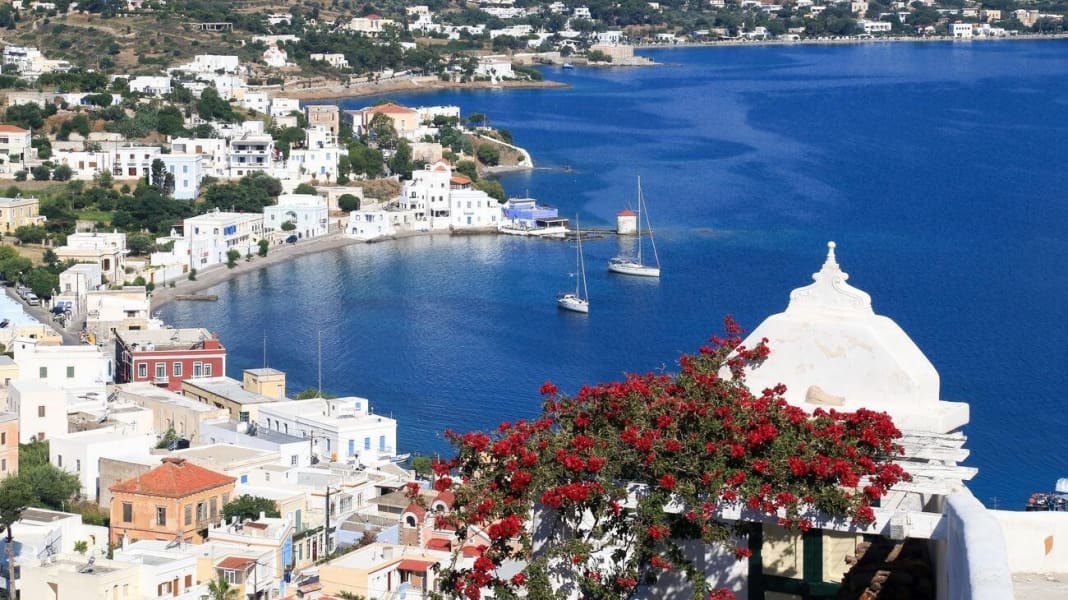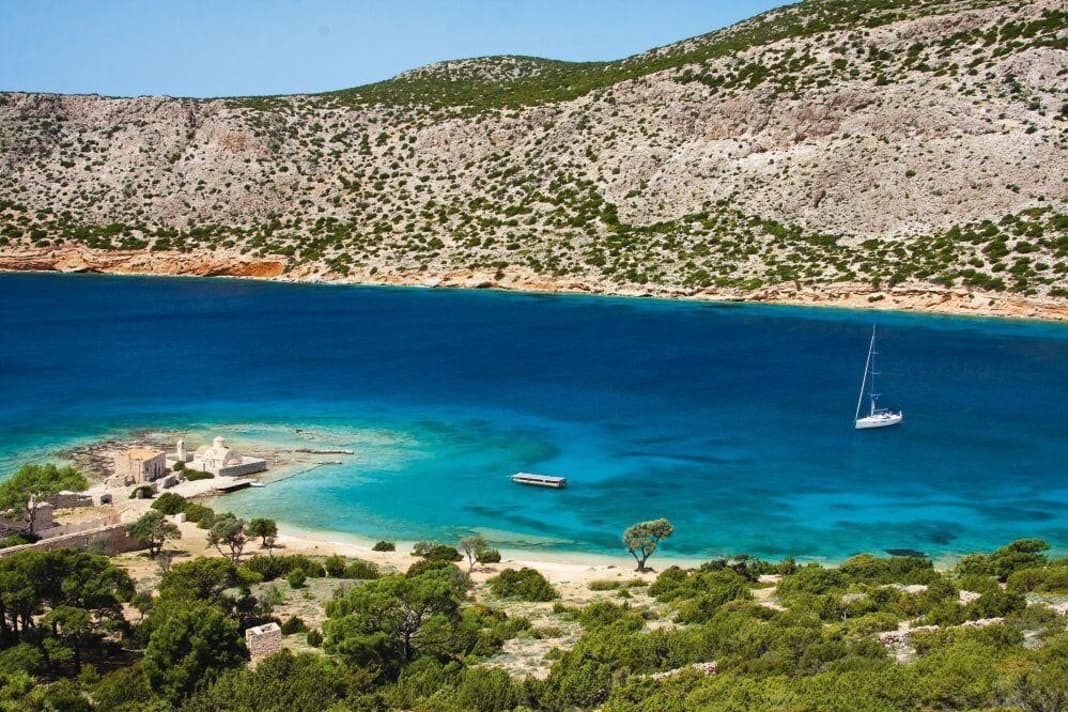
ARRIVAL

The most important starting points for the Dodecanese areCos andRhodes. The islands are very easy to reach from many German airports. However, flights have become relatively expensive in recent years due to a real boom in Greece, especially if the destination is Kos. 350 to 450 euros are the rule, but significantly higher prices of between 500 and 600 euros have also been charged during holiday periods. So make sure you book your flights in good time!






CHARTER
Good selection of fleets in Kos and Rhodes.Kos is the more popular starting harbourbecause you cast off right in the heart of the area. Some crews also sail over from Samos, but this is the exception as there are only a few fleets there. Hardy sailors also sailfrom Athens to the Dodecanese and return the yacht there (Oneway)which many charter companies offer. However, the surcharge for this is steep, usually somewhere between 500 and 1000 euros. In the case of a 14-day charter, however, the charter company will sometimes agree to this at no extra charge if they have a crew that would sail in the other direction. Just ask.

Wind & Weather
The Dodecanese is a popular holiday destination from mid-June to September.Meltemi area. The wind blows fromnorth-western directions and is accelerated in many places by the topography of the sometimes steep islands (Downdraught), blocked or distracted (Cape effects). The leeward coasts of the islands of Karpathos, Patmos, Kalymnos or Nisyros, for example, are known for this. These regional effects can be very pronounced and require some caution, as crews should reduce their sail area in good time or take a diversion around the capes and jets if the wind is already blowing hard. In summer, it is not uncommon for this to be 4 to 6 Beaufort, but longer periods of 5 to 8 Beaufort are also possible. In spring and autumn, weaker winds from south-easterly directions. Occasional low-pressure disturbances with strong winds also come from this direction.
Good weather and swell forecasts can be found on the website of the Greek weather servicePoseidon (www.poseidon.hcmr.gr) and the usual sources such asWindy (www.windy.com) orWindfinder (www.windfinder.de) and its iOS and Android apps.
HARBOURS & ANCHORAGES
There are hardly any marinas (exception: Kos, Rhodes, Leros), insteadCity harbours with simple piers on whichBow anchor and stern lines is created. Electricity is often available, water not always. Just like in the Cyclades, water is an expensive scarce commodity here and is often onlyby tankerjust like the diesel. Sanitary facilities are few and far between. Demanding crews for whom excellent infrastructure is important are not in the right place here. On the other hand, you can moor very cheaply, usually paying less than 20 euros or even nothing for a 42-foot yacht. Almost every island has a wide selection of well-protected anchorages.
NAVIGATION & SEAFARING
Navigationally unproblematic area with one or two shallows around the islands, which are easy to navigate around. The buoyage is rather thin, as is often the case in Greece. Harbours and anchorages must be chosen carefully in strong meltemi conditions so that there is not too much swell in the area, which can quickly become uncomfortable.Observe information on squalls and swell in the sailing area guides!ThePort manoeuvreswith strong meltemi require more caution: you often have toDriven faster so that the yacht does not drift too much. This is particularly important,Enough chainwith the bow anchor so that it really holds and can be tightened without tearing out immediately. This also applies to anchoring nights: put in plenty of chain (five to seven times the depth) andRun in carefully!
On the other passages, for example to Astipalaya or from Rhodes to Karpathos, the sea is often rough in Meltemi. Generally speaking, if there is a lot of windVoid sides of the islands as cover, unless downdraughts are to be expected there.
LITERATURE
The bible for the cruising area: R. Heikell: Griechische Küsten, Edition Maritim, 69.90 euros. Available on many yachts, but often only in English. The best nautical charts for the area are the Greek pleasure craft charts from Eagle Ray, which also contain harbour plans and photos. Many crews also use the British pleasure craft charts from Imray, which are also very good.
TERRITORY CHARACTERISTICS CYCLADES
The Greek islands off the Turkish coast are one of the most varied areas. On the one hand, there are the large tourist islands such as Rhodes with its magnificent old town from crusader times, the lively Kos or Patmos, which is famous for its old St John's monastery. On the other hand, there are the small islands where yachts encounter little tourism, such as Arki, Leros or Kalymnos. There you will find villages or bays with a few tavernas, in front of which a few yachts anchor, a few shops and shops that provide some life and where you can relax and swim in the crystal-clear water. These include small visual highlights such as Symi, which is spectacularly nestled in a crevice with its pastel-coloured houses. Or the perfect anchor bays of the old sponge diving stronghold of Kalymnos, including an exciting museum on the subject. The remote island of Astipalaya, whose capital with its winding alleyways seems to cling to the mountain like a bird's nest, is also something special. Or Leros with its magnificent old captain's houses. If you want to experience a dormant volcano, head to Nisyros, where crews can take a trip to the volcanic crater, which is still emitting powerful sulphur gases and bubbling away.
If you really want to conquer the whole of the Dodecanese in all its diversity, you can spend months travelling here. Everywhere is a little quieter and more relaxed than in the Cyclades, and tourism is not as intrusive. The distances to the next destination are also much shorter than there, but the summer Meltemi is just as stable. The advantage of the Dodecanese in comparison is that you can find quite reasonable shelter and cover between the islands, which are closer together, even when there is more wind. However, due to the sometimes quite mountainous islands, you have to reckon with downdrafts, chop effects and jet phenomena, which can require some caution and timely reefing. The Dodecanese is similarly barren as the Cyclades, parched by the Meltemi, but Rhodes and Kos also have some greenery. Here and there you will find a sheltered valley with a little more vegetation on an island.
Most trips start in the charter hotspots of Rhodes or Kos. If you want to sail the entire archipelago upwind to Patmos, you should start from Kos; the same applies if you want to reach the remote Astipalaya. As a general tactic, it is always good to start by heading north. From Kos, many crews initially sail northwards against the wind via Kalymnos, Leros, Lipsi or Patmos and back. From Rhodes, the route usually also heads north and then loops back via Symi, Nisyros and Kos. Each island is different, each has its own identity, which means there is never a dull moment.
In terms of sailing, the area is a touch less demanding than the Cyclades, with plenty of wind in summer. However, you have to be prepared for downdraughts, even at night at the anchorage, and harbour manoeuvres with strong crosswinds and the occasional slipping anchor. The harbours are very cheap, as always in Greece, but also offer little comfort, rarely sanitary facilities and almost never mooring lines. On the other hand, the kitchen can stay cold, as you can eat very well and cheaply in the area.
Some crews use the nearby Turkish coast for a detour abroad. However, as this involves a complete clearing in and out via the Port of Entry (e.g. Kos, Rhodes, Symi, on the Turkish side Datca, Marmaris, Bozburun - in summer - or Bodrum) and the same procedure on the way back and it is best to send an agent in Turkey, it costs a lot of effort and around 150 to 200 euros. The effort is disproportionate for a one-week trip. If you are travelling for longer, you can consider the detour, but you must ask your fleet operator beforehand whether they allow it. In general, the number of charter yachts travelling across the border has decreased significantly.
DETAILED YACHTING STORIES DODECANESE IN DOWNLOAD

